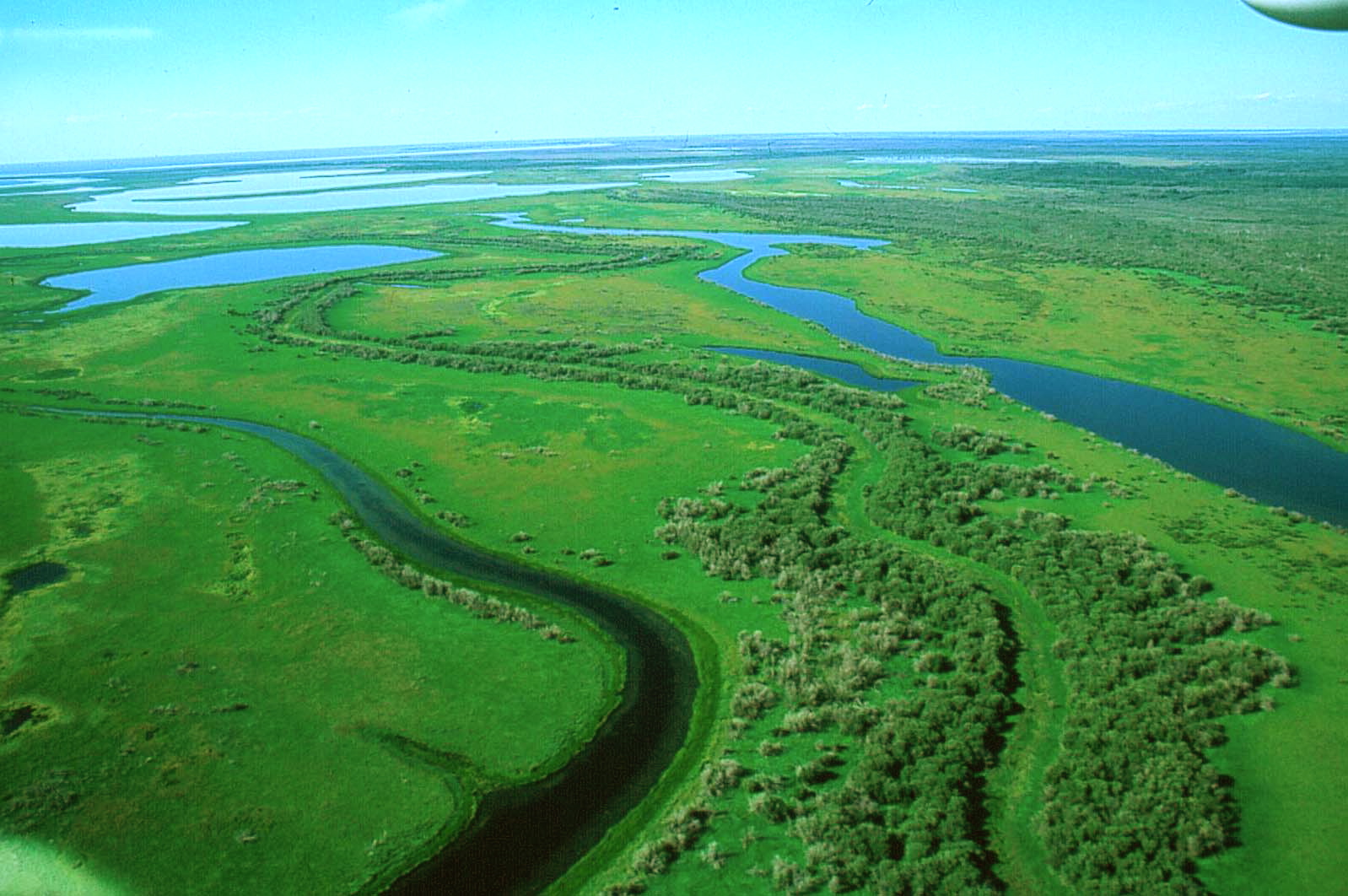
[geoip-content country=”CA”]
It’s WWF Water Wednesday, when Love Nature explores the unique characteristics, natural history, environmental challenges and threats of Canadian waters. Tune in to Love Nature on television every Wednesday at 8 p.m. ET/PT for WWF Water Wednesdays to learn more about other amazing watery environments found around the world.
[/geoip-content]
The Peace-Athabasca watershed is nearly half a million square kilometres, and covers a huge portion of northern Alberta. It contains the Athabasca River and the Peace River, which converge in the northeast corner of the province to form the Peace-Athabasca Delta, a remote wetland and arguably the most ecologically important part of the watershed. As part of Wood Buffalo National Park, the delta is relatively untouched by civilization, but it’s thriving with life. The wetland is home to more than 40 mammals and 20 species of fish. It’s most recognized, however, as an important nesting and staging ground for hundreds of bird species. And if that’s not enough to convince you of its significance, here are five more reasons we need to protect the Peace-Athabasca watershed.
It contains the world’s largest inland delta
The rivers, lakes, channels, and marshes that make up the Peace-Athabasca Delta total 6000 square kilometres. To give you an idea of how big that is, the city of Calgary is only 835 square kilometres. That means the delta is more than seven times the size of Cowtown. It also makes the Peace-Athabasca the biggest inland delta in the world.
Up to one million birds pass through the delta in autumn

As one of the most important nesting and staging areas for waterfowl in North America, the Peace-Athabasca Delta is a birdwatcher’s delight. In the spring, up to 400,000 birds pass through the area, and in the fall that number can jump to as high as one million. Tundra swans, snow geese, and the rare Ross’s goose are just a few of the species the wetland supports.
Some of those birds are endangered

The delta provides a vital nesting spot for the peregrine falcon, which has been identified as a “Species at Risk” by Parks Canada. This bird of prey is extremely sensitive to chemical pollutants such as pesticides, which is one of the reasons it’s endangered. But this vulnerable bird isn’t the only at-risk species you’ll find at the delta—it’s also home to the world’s last migratory flock of whooping cranes.
The Peace-Athabasca Delta is recognized internationally

In 1982, the Peace-Athabasca Delta was recognized by the Ramsar Convention as a “Wetland of International Significance,” alongside more than 2,000 waterways around the world. It was deemed significant for its ability to support hundreds of bird species, some of which are nearly extinct, and a healthy bison population. In fact, the site contains the largest undisturbed grass and sedge meadows in North America, making it home to thousands of wood and plains bison.
The Athabasca River runs through the oilsands

The Athabasca River originates from a glacier in the Columbia Icefield, running 1,538 kilometres northeast to where it drains into the Peace-Athabasca Delta. While the upper region of the river is protected in Jasper National Park, the lower Athabasca isn’t as lucky. Before reaching the delta, it cuts straight through the oilsands, which is why flow regulation, pollution, and climate change are considered some of the biggest threats to the lower river, and consequently, the delta.
